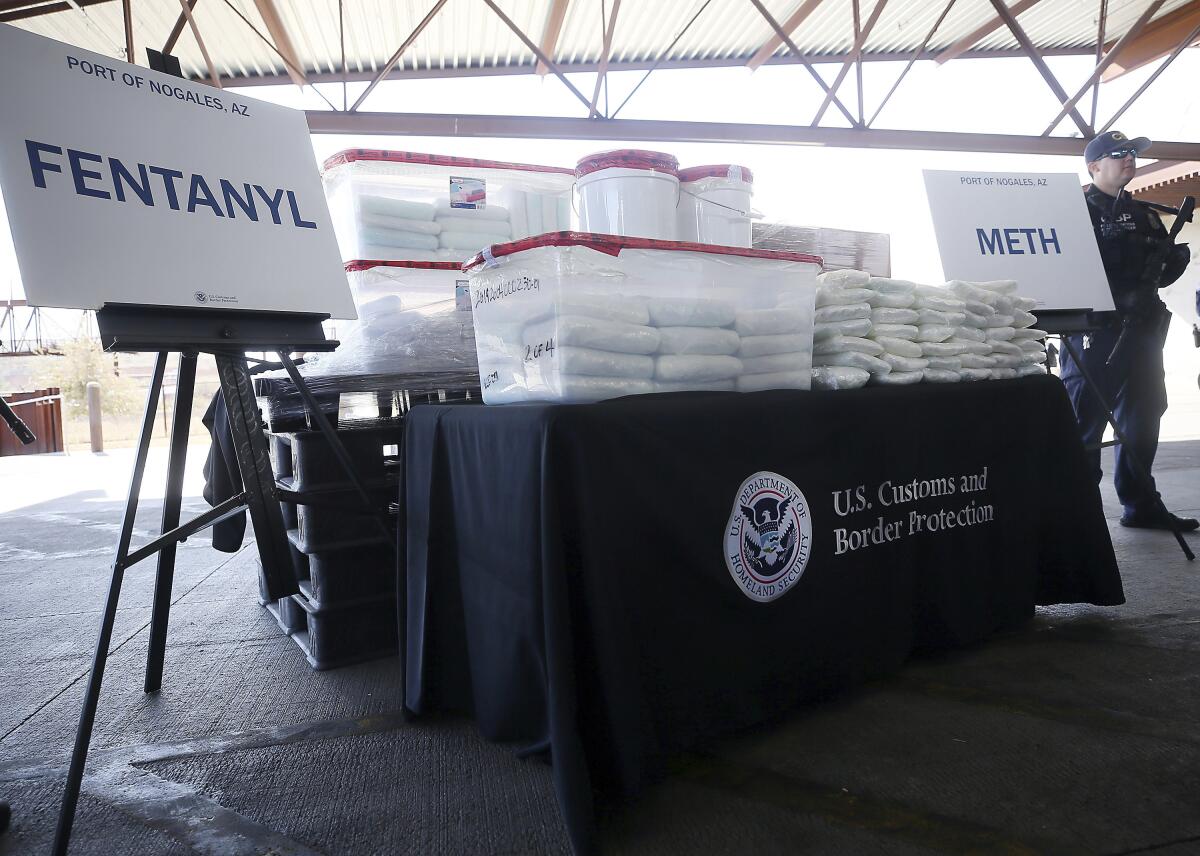Opinion: Having naloxone in schools and teaching staff how to use it can prevent fentanyl overdoses

As more individuals consume fentanyl accidentally, through the use of opiates or other drugs, they begin to develop both an addiction and a tolerance.
Kleinman is a senior at La Jolla High and the PTSA School Leadership chair and lives in La Jolla.
Opioid use has dramatically increased among high school-aged students. Brightly colored fentanyl, referred to as “rainbow” fentanyl, is circulating and has been mistaken for candy. In addition to the dangers of consuming fentanyl intentionally or accidentally, more and more drugs are being laced with fentanyl. The inclusion of fentanyl into other drugs is relatively new so public awareness is generally low, especially about just how deadly tiny doses can be. In fact, overdose deaths linked to synthetic opioids like fentanyl tripled in the past two years among teenagers, yet 73 percent of teens have never heard of fake prescription pills being laced with fentanyl.
Fentanyl is a potent, addictive and even deadly synthetic opioid. Its use and overdoses related to it are soaring in recent years.
Fentanyl is a synthetic opioid that was traditionally used for pain relief in hospitals, but since it is cheap and simple to make, fentanyl is now in the street drug market as a cheap filler. There has been a huge increase in drug-related deaths since it only takes the size of a few grains of sand for fentanyl to be lethal. These few grains of fentanyl are often put into street opiates, benzodiazepines and other drugs as a cheaper alternative to those drugs’ active ingredients. For example, instead of THC, marijuana cartridges may contain fentanyl. This way, dealers and cartels don’t need to worry about paying for expensive ingredients to create drugs. They can just press a pill identical to a prescription that has the power to kill. A few extra grains make all the difference.
The issue with fentanyl-laced drugs continues beyond simply overdoses. As more individuals consume fentanyl accidentally, through the use of opiates or other drugs, they begin to develop both an addiction and a tolerance. Fentanyl addiction is often far stronger and more serious than that caused by many other drugs. When users builds a tolerance, they assume that their tolerance has simply gone up in terms of the drug they think they are using, when in reality it is to fentanyl. This results in more frequent or greater intake, which for a drug like Xanax or cocaine might not kill them immediately, but the fact that they are consuming fentanyl instead means that any increase in dosage could prove fatal. As a result, more and more recreational drug users continue to pass away from unknowing and unintentional fentanyl use.
In 2021, there were 224 fentanyl-related overdose deaths among teens aged 15 to 19 in California, and, in 2022, a San Diego Unified School District high-school student survived an opioid overdose on school grounds because someone administered nasal naloxone. This can reverse an opioid overdose if administered properly. The Naloxone Distribution Project provides naloxone kits to California schools and universities prepared to administer it at no cost. On Oct. 11, 2022, the San Diego Unified School District Board unanimously voted to pass a resolution to ensure that naloxone was available at all district campuses, and that school police officers, nurses, health office staff and other staff on campus are trained to administer it at district school sites. The board also resolved to provide multilingual educational materials via social media, email and websites to the school and extended community and to participate in National Fentanyl Awareness Day on May 9 by spreading information through posters and handouts, inviting speakers to come onto campus and directing students towards resources that provide free naloxone.
Students at area colleges, private schools and charter schools must also be proactive and push this issue to the forefront of conversations regarding student health and wellness. This can be achieved by working with their school officials to improve awareness regarding the dangers of fentanyl and increasing the availability of and knowledge about naloxone. Students should talk to their deans, principals, superintendents and student government leaders to insist on participation in Fentanyl Awareness Day on May 9. One year ago, Drug Enforcement Administration Administrator Anne Milgram warned that, “fentanyl is killing Americans at an unprecedented rate.” We can all save lives by talking about the threat with our friends and family.
Ensuring all students — especially in middle and high school — and teachers, administrators and the extended community have the most up-to-date information will help prevent unnecessary tragedies. Forty years ago, many people had no idea what an automated external defibrillator was, and even fewer knew how to use one. Today, however, they are commonplace in nearly every school, government or corporate building, and middle schoolers are taught how to use them. This is the level of change that needs to be made with naloxone. Insisting it is on campus, readily available and in the hands of trained staff members will save lives.
Get Weekend Opinion on Sundays and Reader Opinion on Mondays
Editorials, commentary and more delivered Sunday morning, and Reader Reaction on Mondays.
You may occasionally receive promotional content from the San Diego Union-Tribune.





